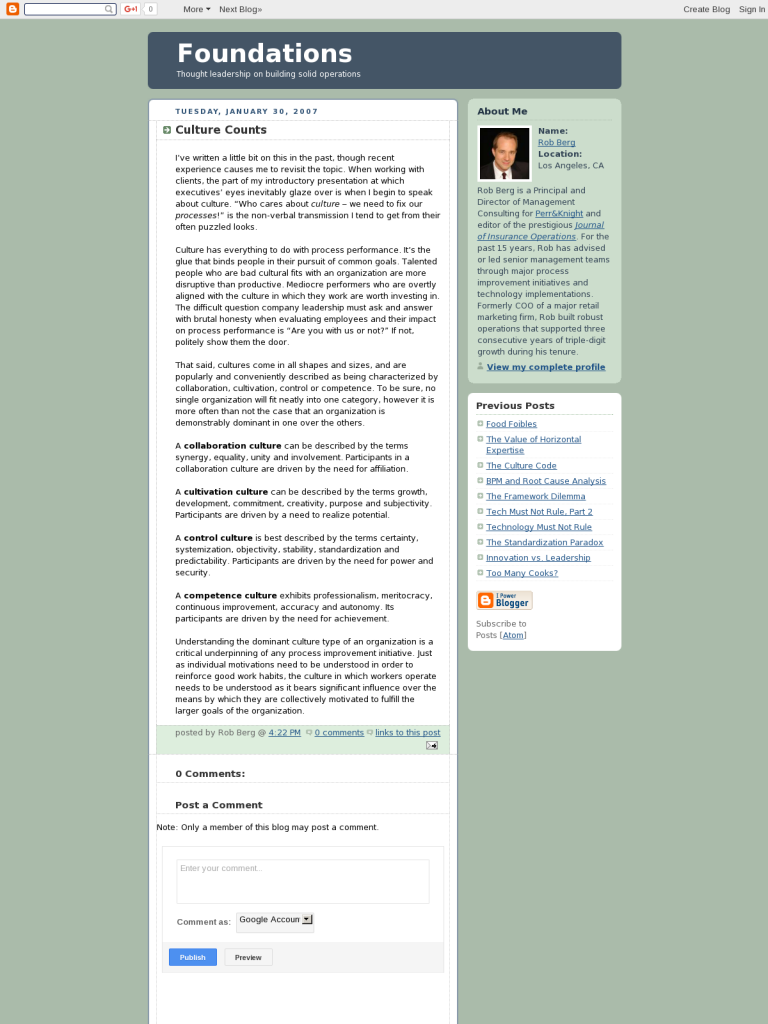Culture Counts
Blog: BPM Insights - Rob Berg
I’ve written a little bit on this in the past, though recent experience causes me to revisit the topic. When working with clients, the part of my introductory presentation at which executives’ eyes inevitably glaze over is when I begin to speak about culture. “Who cares about culture – we need to fix our processes!” is the non-verbal transmission I tend to get from their often puzzled looks.
Culture has everything to do with process performance. It’s the glue that binds people in their pursuit of common goals. Talented people who are bad cultural fits with an organization are more disruptive than productive. Mediocre performers who are overtly aligned with the culture in which they work are worth investing in. The difficult question company leadership must ask and answer with brutal honesty when evaluating employees and their impact on process performance is “Are you with us or not?” If not, politely show them the door.
That said, cultures come in all shapes and sizes, and are popularly and conveniently described as being characterized by collaboration, cultivation, control or competence. To be sure, no single organization will fit neatly into one category, however it is more often than not the case that an organization is demonstrably dominant in one over the others.
A collaboration culture can be described by the terms synergy, equality, unity and involvement. Participants in a collaboration culture are driven by the need for affiliation.
A cultivation culture can be described by the terms growth, development, commitment, creativity, purpose and subjectivity. Participants are driven by a need to realize potential.
A control culture is best described by the terms certainty, systemization, objectivity, stability, standardization and predictability. Participants are driven by the need for power and security.
A competence culture exhibits professionalism, meritocracy, continuous improvement, accuracy and autonomy. Its participants are driven by the need for achievement.
Understanding the dominant culture type of an organization is a critical underpinning of any process improvement initiative. Just as individual motivations need to be understood in order to reinforce good work habits, the culture in which workers operate needs to be understood as it bears significant influence over the means by which they are collectively motivated to fulfill the larger goals of the organization.
Leave a Comment
You must be logged in to post a comment.








